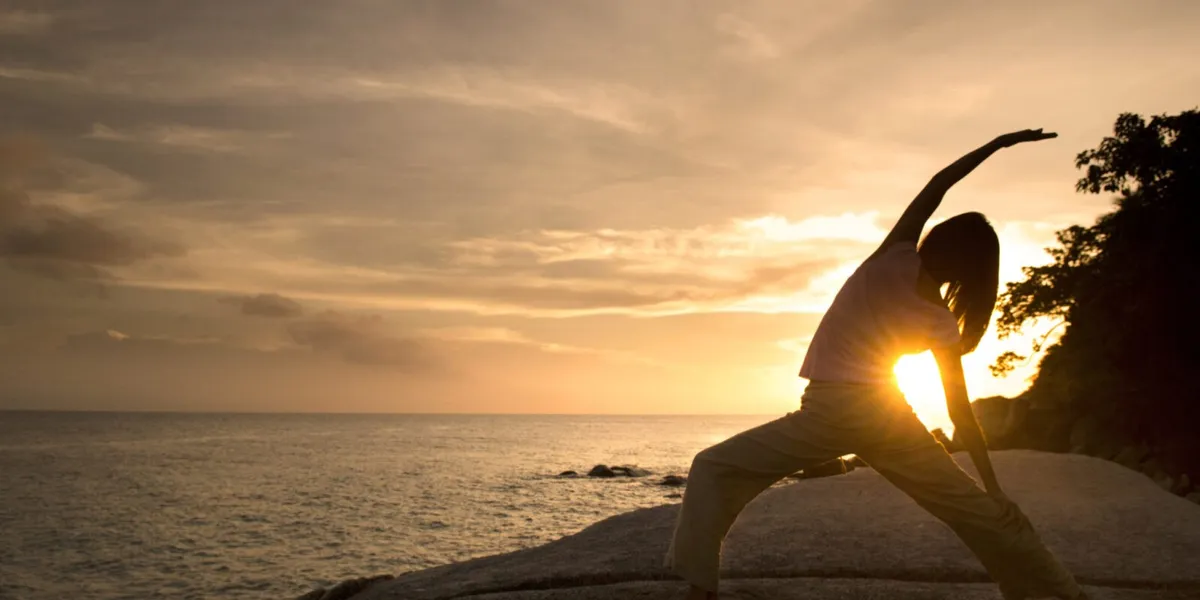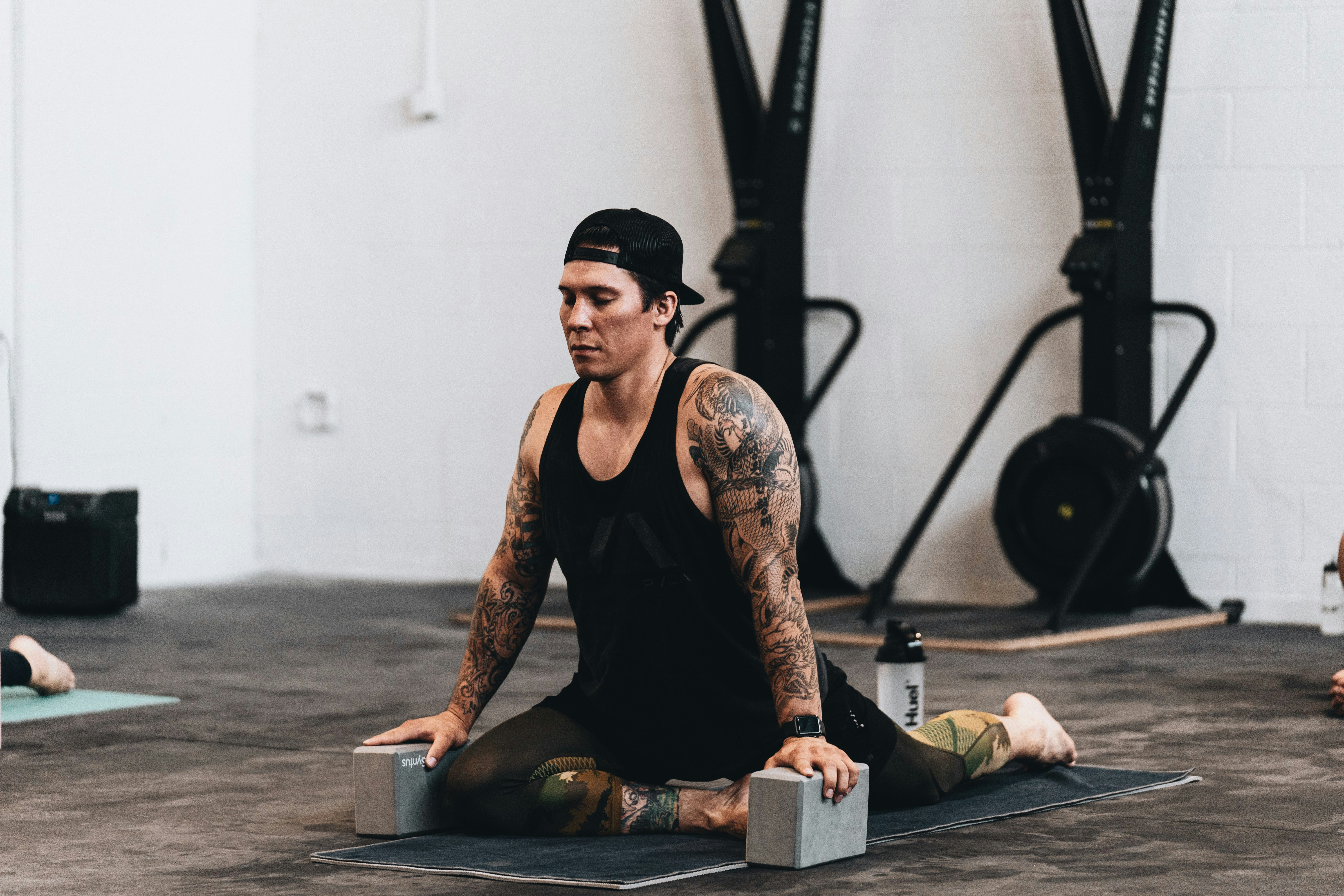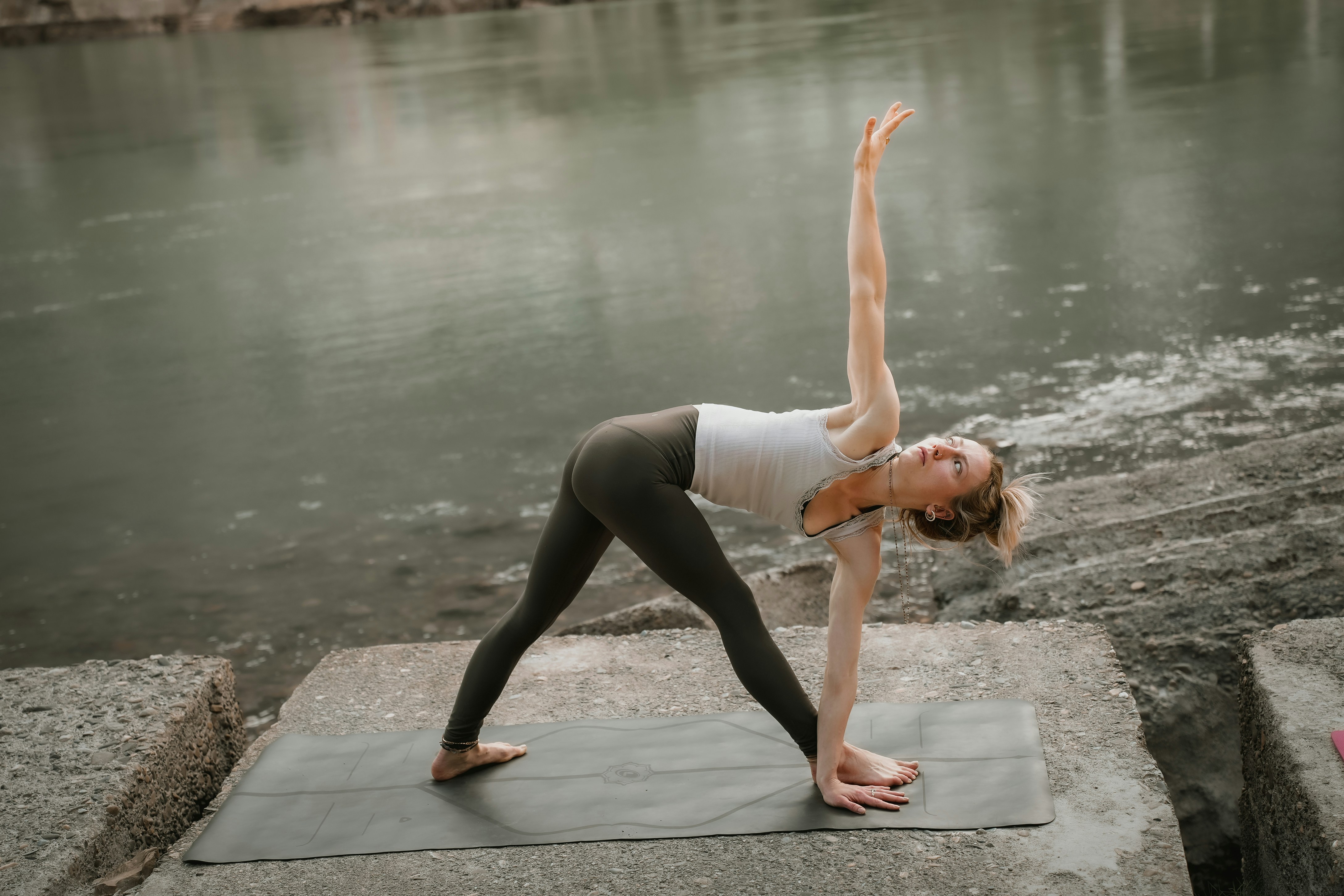The Yoga League
Best Hamstring Pose: How to Stretch Your Hamstrings in Yoga

When I first started practicing yoga, I noticed that my hamstrings were one of the tightest areas in my body. I’d feel discomfort not just during my yoga practice, but also in daily activities like bending over to tie my shoes or sitting for long periods. Over time, I realized that working on my hamstrings through regular yoga practice was essential to improving my flexibility and reducing discomfort. Among the many poses that target this area, there is one that I consider the best hamstring pose: Forward Fold (Uttanasana). In this article, I’ll dive into why I believe this pose is the best for stretching the hamstrings and how it can positively impact your practice.
The Importance of Flexibility in the Hamstrings
Before jumping into the specifics of the best hamstring pose, let’s discuss why stretching the hamstrings is so crucial for overall body health. The hamstrings play a key role in various movements, especially walking, running, and bending. Tight hamstrings can lead to a range of issues, including lower back pain, poor posture, and even limited mobility in other yoga poses. Over time, tightness in this area can affect our ability to move freely, which is why it’s essential to prioritize hamstring flexibility in our yoga practice.
For me, finding a consistent way to stretch my hamstrings became a game-changer. I realized that by focusing on specific yoga poses that target this area, I could make a significant difference in both my physical comfort and overall flexibility. Of all the poses that focus on hamstrings, Forward Fold (Uttanasana) stands out as the best hamstring pose, offering deep stretches, while also benefiting other parts of the body.
The Best Hamstring Pose: Forward Fold (Uttanasana)
Forward Fold, or Uttanasana, is one of the most effective poses for stretching the hamstrings. It’s also an accessible pose for practitioners of all levels. The beauty of this pose lies in its ability to directly target the hamstrings while also benefiting the back, hips, and calves. It’s a forward bend that allows you to engage your entire body, focusing on lengthening and stretching the backs of your legs while promoting overall relaxation and flexibility.
How to Do Uttanasana (Forward Fold)
- Start in a Standing Position: Stand tall with your feet hip-width apart and your arms relaxed by your sides. Take a few deep breaths to center yourself and prepare for the stretch.
- Engage Your Core: Inhale and lengthen your spine, standing up straight. Engage your core muscles to create stability in your torso. Keep your chest open and your shoulders relaxed.
- Begin to Fold Forward: Exhale slowly as you start to hinge at your hips, folding forward toward your legs. Keep your spine long as you descend, moving from the hips, not the lower back. If your hands can reach the floor, great, but if not, feel free to place your hands on your shins or use yoga blocks for support.
- Relax Your Neck and Head: Let your head hang freely, aligning it with the rest of your spine. There should be no tension in your neck. Allow your chest to move toward your thighs to deepen the stretch, but avoid forcing yourself to go too far.
- Hold the Pose: Stay in the fold for 30 seconds to 1 minute. With each inhale, lengthen your spine further, and with each exhale, soften and deepen the stretch. Focus on your breath and allow your hamstrings to stretch with each cycle of breath.
- Come Out Slowly: To come out of the pose, engage your core and begin to slowly rise, one vertebra at a time, until you are back in a standing position.
Why Uttanasana Is the Best Hamstring Pose
Uttanasana, or Forward Fold, is my go-to hamstring stretch for several reasons. Not only does it effectively target the hamstrings, but it also provides benefits for other areas of the body, making it an all-around great pose for improving flexibility and posture.
Deep Hamstring Stretch
One of the main reasons why I consider Uttanasana the best hamstring pose is its deep stretch for the hamstrings. The forward folding motion allows for a powerful stretch in the back of the thighs. Over time, as I practiced this pose consistently, I noticed an increase in flexibility in my hamstrings, which has translated into better performance in other yoga poses, as well as in everyday movements like bending and reaching.
Improves Posture and Spine Health
The Forward Fold pose also has significant benefits for the spine. As I lengthen my spine during the forward bend, I help open up the space between the vertebrae and stretch the lower back. This can relieve tension and promote better posture. Often, tight hamstrings are associated with poor posture, and by regularly practicing Uttanasana, I’ve noticed a noticeable improvement in how I carry myself throughout the day.
Helps with Lower Back Pain
Tight hamstrings can be a major contributor to lower back pain. Since I started incorporating Forward Fold into my practice, I’ve experienced significant relief from the discomfort that can arise from sitting for long periods or lifting heavy objects. Uttanasana stretches the lower back and hamstrings simultaneously, helping to alleviate the tension that builds up in this area.
Calming and Relaxing
Like many yoga poses, Uttanasana also has a calming effect on the mind. When I practice this pose, I focus on my breath, which allows me to relax and release any mental tension. The inversion that occurs in the pose helps to calm the nervous system, making it a great way to wind down after a long day or to simply bring some mindfulness into my practice.
Tips for Deepening Your Forward Fold
While Forward Fold is accessible, there are a few tips that have helped me get the most out of this pose:
Engage the Thighs
While folding forward, engaging your thighs and pressing your heels into the ground can help protect your knees and create more stability in the pose. Even though your focus is on the hamstrings, engaging the legs will ensure proper alignment and prevent any strain.
Use Blocks or Support
If you can’t touch the floor yet, don’t worry. Using yoga blocks under your hands or resting your hands on your shins can help you feel the stretch without overexerting yourself. Over time, as your flexibility improves, you’ll be able to deepen the fold and increase the stretch.
Focus on Your Breath
Breathing deeply and consistently is key to getting the most out of any yoga pose, especially Forward Fold. With each exhale, try to move deeper into the fold, but only as far as your body allows. Always listen to your body and avoid pushing too hard.
Incorporating Uttanasana into Your Practice
Uttanasana is a pose that can be included in nearly any yoga sequence. I like to use it as a warm-up to prepare my body for other poses, or as a cool-down to stretch and release tension after a more intense practice. It can also be a great pose to use if you need a moment of calm or relief during your day.
Final Thoughts
I can confidently say that Uttanasana is the best hamstring pose for me, and I believe it can be incredibly beneficial for anyone looking to improve flexibility and relieve tension in the hamstrings. Not only does this pose target the back of the thighs, but it also promotes better posture, improves spine health, and has a calming effect on the body and mind. If you haven’t already included Uttanasana in your yoga practice, I highly recommend giving it a try. With regular practice, you’ll likely notice the same improvements I’ve experienced in flexibility, comfort, and overall well-being.










